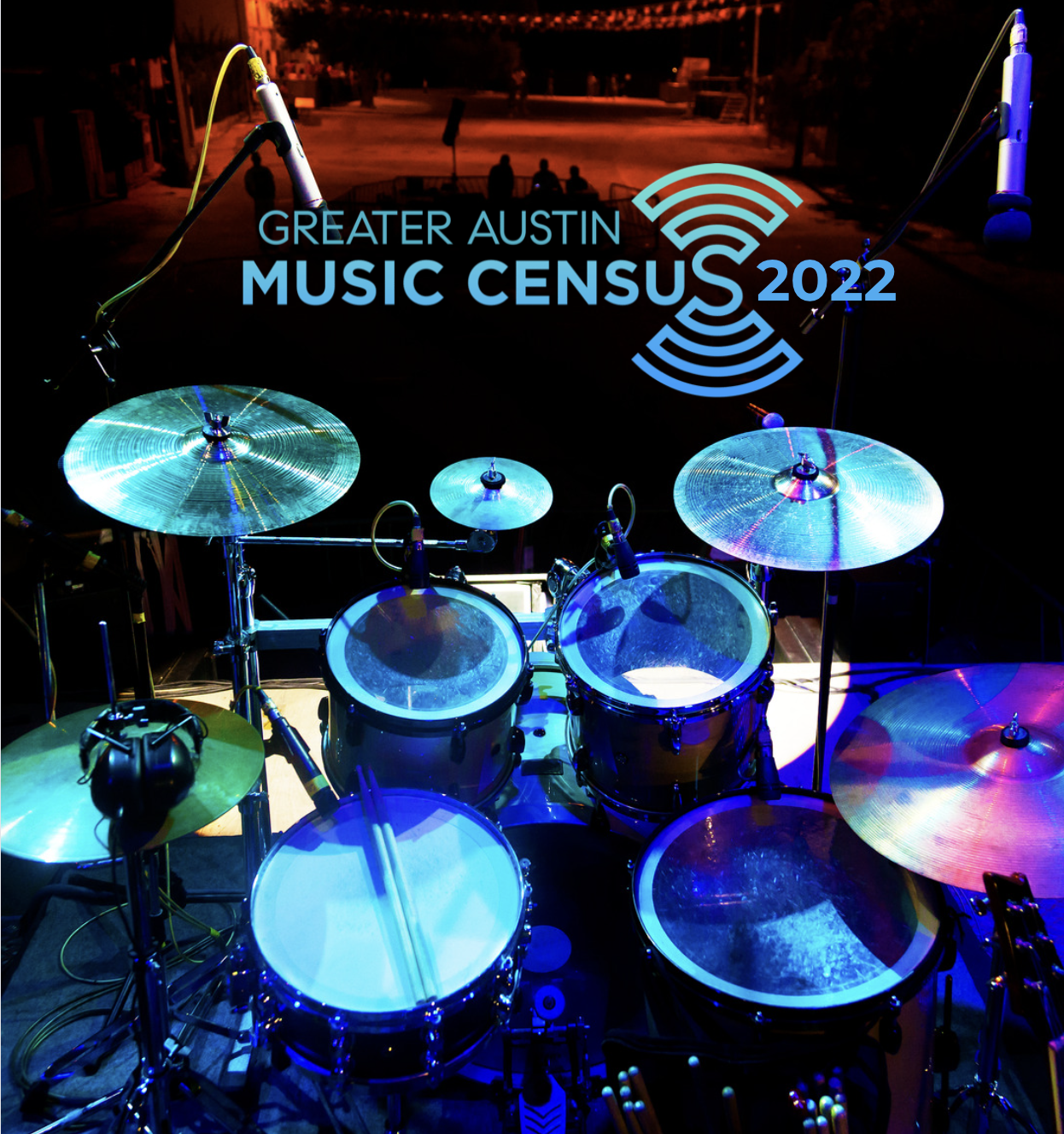Austin Music Census Launches Refreshed Music Ecosystem Study Approach
In February 2023, Austin, TX launched the reports from its 2022 Austin Music Census. This is the second census that the Live Music Capital conducted since the 2014 inaugural census which means that Austin has directional data about its music ecosystem for the first time. For example, a key finding was the migration of music people out of the city’s urban core over the last decade. Full results are available at austinmusiccensus.org. Beyond the insights specific to Austin, this Census launched a refreshed approach that’s also been adopted by Chattanooga and Sacramento. The updated census offers several improvements ready for the cities that join the new multi-city cohort.
Redesigned Music Census™ is a Prototype for Multi-City Cohort
The traditional approach of ecosystem studies usually includes hiring a consultant, a six-figure budget, 12 months before results, and creating a dense report that often sits on a shelf. The recipients of the report don’t feel invested and believe that either the client or consultant who created the report will do the work that it recommends. Observing this pattern, we set out to learn from and improve upon the shortcomings of the traditional approach. The revised census makes measuring a music ecosystem more affordable, more efficient, more sustainable, and more impactful. We designed the music census to work for not just well-known music cities like Austin, but also for any cities with 100k+ populations looking to become music friendly as part of their culture, identity, and economic success.
Key shifts to the redesigned Music Census™:
1. Community-led from the Start
It takes a village to reach every part of the ecosystem because its siloed and fractured by nature. In Austin (and also in Chattanooga and Sacramento), over 50+ community partners engaged in the process to reach music people. In a significant shift since the 2014 census, Austin’s 2022 census was sourced and promoted by the community using a grassroots approach that engaged local partners who hold relationships with music people. The rebooted Census uses a structure of Lead Partners composed of a mix of city government, expert consultants, and community organizations as well as Community Engagement Partners who serve as the primary means of outreach to music people. This approach garnered more trust and ownership from the community itself, making the entire Census more authentic to each city.
2. Free the Data
The results belong to the community because the data is a collective reflection of who they are as a music ecosystem. Instead of offering a top-down analysis in a voluminous report, the new Census offers three core deliverables to the community:
Summary Report (key takeaways and insights)
Data Deck (Friendly format - glanceable data presented for non-data scientists to understand and use)
Diversity, Equity, and Inclusion Deep Dive Report (new)
3. Benchmarks with Other Cities
While each city is inherently interested in its own data, we’ve learned that cities want to know how their data compares. With our new data approach, Sound Music Cities offers benchmarks to key indicators across other cities. This city-city learning feature will be a key element of the new music census cohort that will continue to grow with each new city.
4. New Diversity, Equity, and Inclusion Section
With the guidance of the community, the Austin Music Census updated demographic questions to include new diversity, equity, and inclusion element. This new section measures sentiment across a set of different adjective pairs (racist/inclusive, sexist/non-sexist, elitist/non-elitist, etc.) and offers important data and insights that capture attitudes and perceptions on DEI topics that can be parsed by demographic sub-groups to understand the bias that’s experienced within the music community. Regarding the new DEI section, Culture Map’s Brianna Caleri offers, “Although most studies of the music industry — in Austin or elsewhere — will overwhelmingly be skewed toward the opinions of white male players, this collaborative breakdown offers insight into more diverse needs than its predecessor.”
5. Census Measures Lived Experience
The revised census focuses even more on capturing music people’s lived experience, especially their needs. Shifting away from the economic impact study mindset, the 2022 Austin Music Census removed questions from the 2014 survey that aimed to quantify the income of music people in a way that turned off many respondents. This census captures an understanding of where they live, who they are, how they interact with other parts of the music ecosystem, and what they most need to go to the next level.


